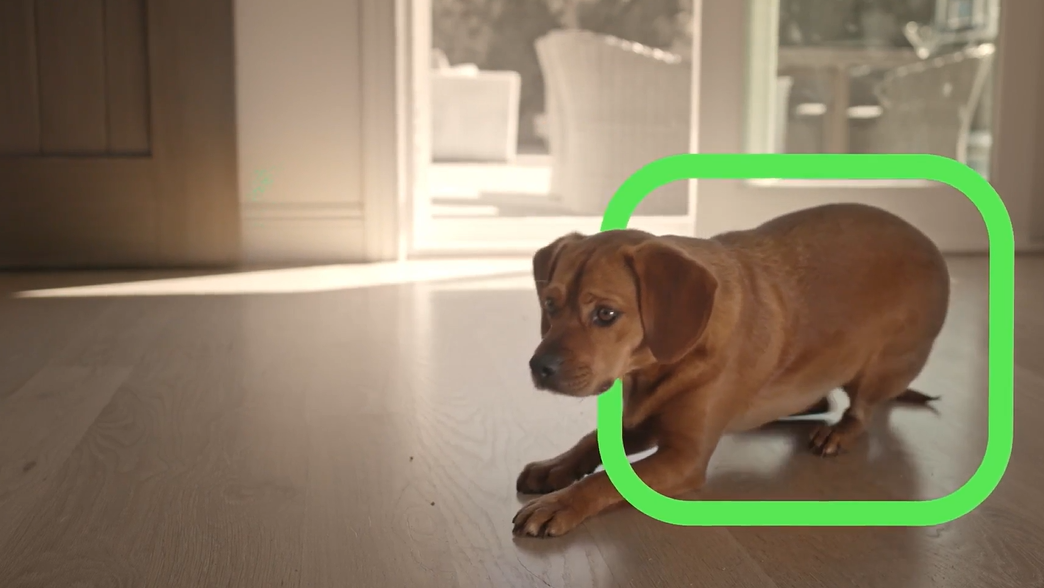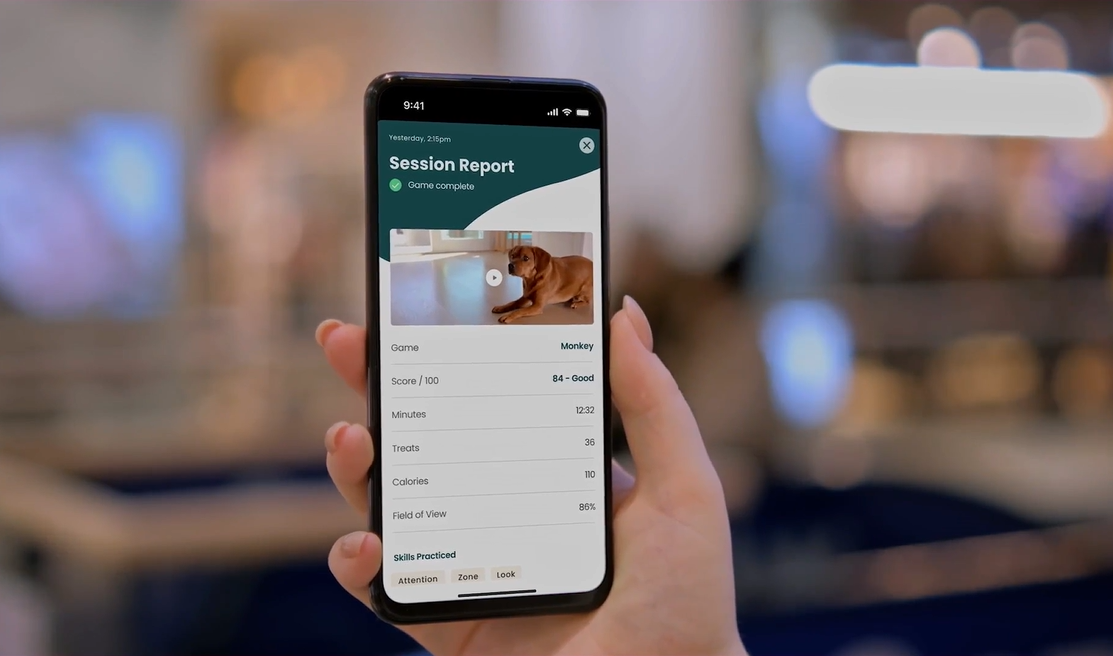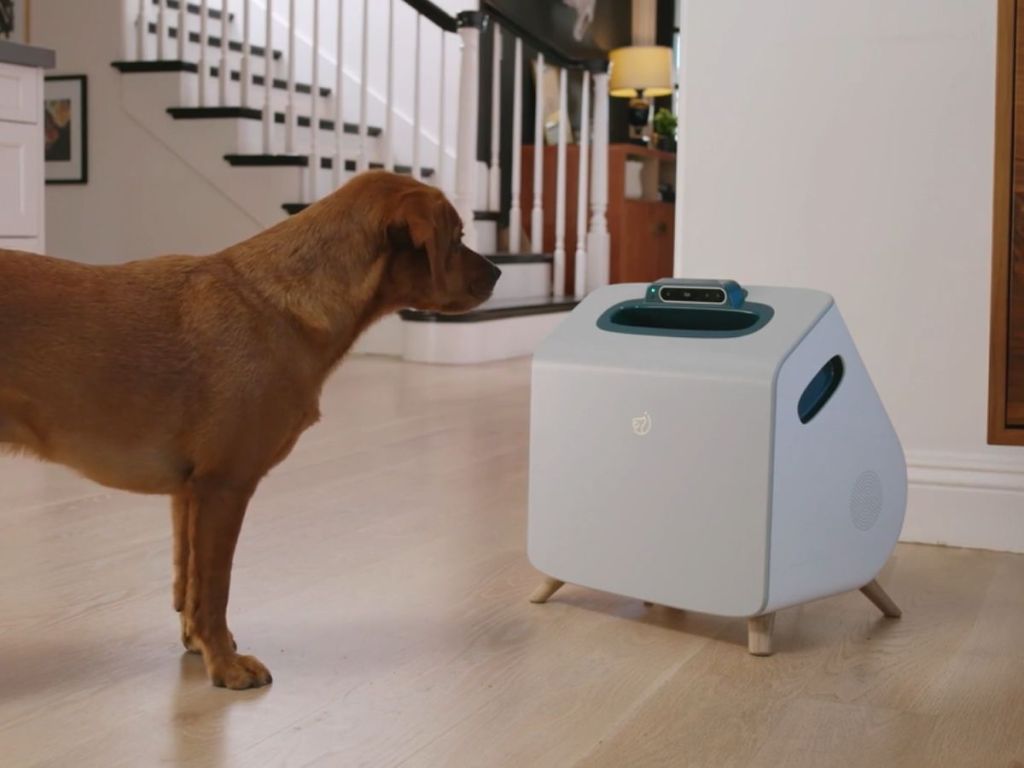AI is helping us in so many new ways these days so our obsession with it is understandable. But now our floofy companions may also be potential customers. A new dog-training AI robot is about to hit the market, after the beta version was well received. This AI can not only train our dogs for us, but it can keep them entertained when we are not there. That is the promise, anyway. Is this a dystopian nightmare where we lose our emotional connection with our pets? Or is it the breakthrough that is needed so we stop worrying about our pets while we aren’t there?
The device
Called Companion, the device is still in the early stages of life. After a successful initial beta release, it will now be available for mass consumption. This however is if you can get through the waiting list to buy it. Due for delivery in May of 2024, you might get lucky if you put your name down now.
Already, influencers have been recruited to try it out with their floofs.
AI Dog Training
The Companion bot claims to be an autonomous dog training device that uses lights, sound, a camera, and a treat launcher in conjunction with AI processing. The aim is to compete with dog trainers or save you the work of pet training.
When the lights come on, the pup will know it is time to interact. The use of treats teaches the dog which behaviours are desirable.
While bots that give treats and train dogs are not new, there are some really interesting AI functions on the Companion that are new.
For example, the company promises regular software updates, and cloud-based storage that you will need to personalise the experience for your dog. The fees will also cover updates of the AI that will recognise health changes in your dog that can indicate problems, like a change of gait.

There are some costs attached though. There is the initial outlay of US$999 (AU$1495) for the actual device, plus there is a subscription per month of US$49 (AU$73).
The company making the bot says the main thrust of the AI is teaching with positive reinforcement. “We’re basically rewarding our furry friends for doing something we like. It could be a tasty treat for sitting like a champ, or a gentle scratch behind the ears each time they rest their head on our lap.”

Expert opinion
The founder of Animal Behaviour Experts, Rose Horton, says that there are some things that can’t be replaced with AI, like the love between a pet and an owner.
“When it comes to training dogs, you really need to be able to read the dog’s body language and then the dog needs to be picking up cues from a human.”
Horton says that if the robot was in the shape of a human, that would not be a good thing, as it would be too confusing for the dog. But other than that it holds promise. “I don’t think there’s anything wrong with using it, if your dog is left at home alone. It does stimulate the dog and keep it happy.”
This is as long as there isn’t a missing human relationship with the dog. “We steer people away from sending their dog out to get trained, because the training session should be with the owner and the dog, so that they can build a bond. As long as people don’t think it’s the cure for not training your dog and not taking it for a walk and other types of enrichment. I don’t think you can ever get anything to replace the human-animal bond. Training is so important for building the relationship with the dog and you would hope that people would never replace that.”
Human connection
Animal Welfare League Queensland (AWLQ) is intrigued by the possibilities of the Companion AI system. “We believe in the principle that technology should serve to enhance our lives and those of our pets. As such, we appreciate the potential benefits that Companion could offer, such as increased mental stimulation and consistent positive reinforcement training for our furry family members. However, it is crucial to stress that this technology should serve as a supplement, rather than a replacement, for the vital and irreplaceable human-pet interaction. Dogs are pack animals; human companionship, physical touch, and social interaction are fundamental to their well-being. Technology, while potentially enriching our dogs’ lives, can never fully replicate the emotional connection and bond between a pet and their family.”
AWLQ says that Companion’s ability to track and monitor subtle behavioural changes could be a valuable tool in proactive pet health care, it is also vital to understand that behavioural issues are often complex and multifaceted. “Addressing these issues requires a comprehensive approach that includes understanding the root causes, providing appropriate training, and adjusting the environment. No technology can replace the understanding and empathy of a skilled animal behaviourist or a caring family.”
Big names
Horton says that the device has very reputable names behind it. “Ken Ramirez is one of the top trainers in the world. And they’ve got a veterinary behaviourist Dr Marty Becker. These people are experts in their field. So if they’ve signed off on it, then I’d probably endorse it too.”
Horton also says that because it doesn’t punish the dog, and it provides mental enrichment, she feels like she can support it. “Separation anxiety is very common with dogs that are very popular at the moment, which is poodle crosses, like cavoodles. Anything that can help a dog feel more relaxed when it’s at home is good. But some things just can’t be replaced with AI and that’s of course the love between dog and owner. There’s absolutely no replacing that.”





